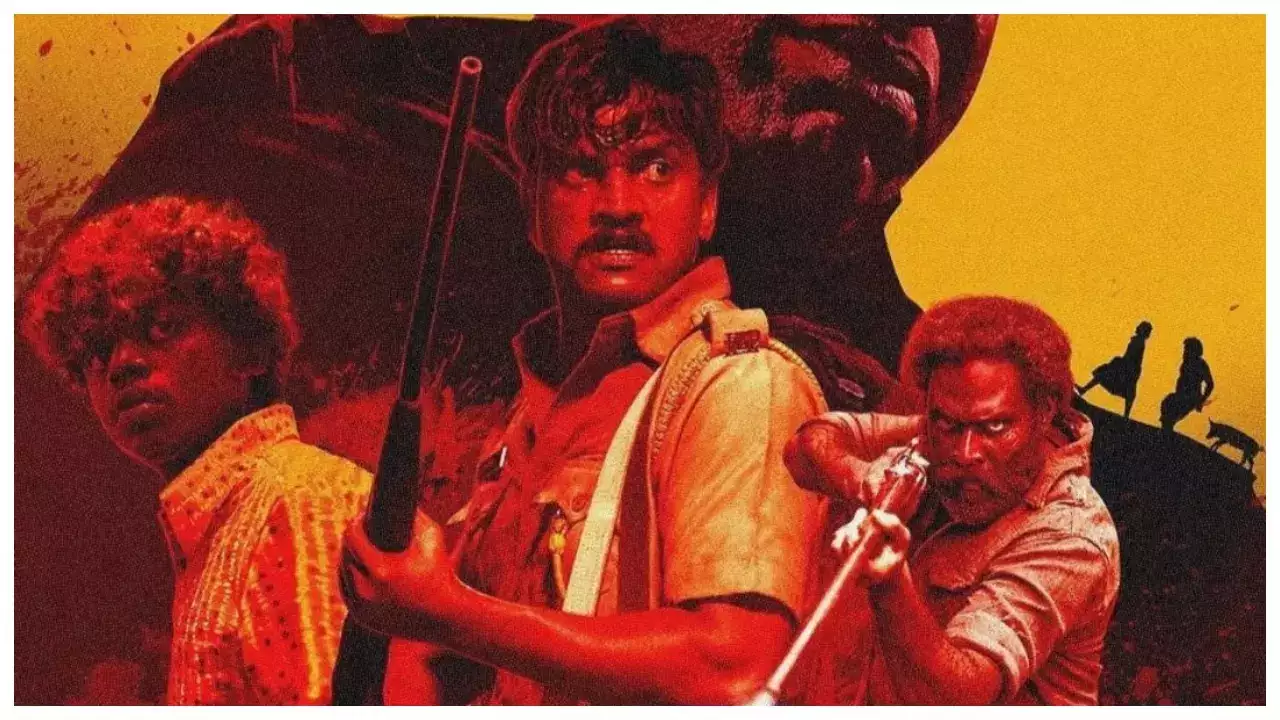anchakkallakokkan (film, 2024) ↔

Anchakkallakokkan by Ullas Chemban attempts to fuse the folk art of Porattunadakam with a pulp fiction style narrative set in 1980s rural Kerala. While the technical aspects and some performances kept me engaged for most parts, overall, the film worked only partially as an intriguing experimental work.
The film is set in 1986 in the fictional village of Kalahasti, situated along the Kerala-Karnataka border. It opens with the murder of a local landlord, Chaapra, which sets off a series of events involving the local police station and Chaapra's sons. Into this mix arrives the timid constable Vasudevan, who finds the village and his job much more complicated than he had imagined.
Right from the opening scenes, cinematographer Armo's work stood out. He beautifully captures the rustic atmosphere of 1980s rural Kerala/Karnataka. The lengthy establishing shots of the village and surrounding areas were well-shot and immediately transported the viewers to that era. The production design team has also done a commendable job recreating the period setting through his work.
The filmmaking really becomes interesting in how director Ullas Chemban attempts to blend elements of the folk art form Porattunadakam into the narrative. We are introduced to Vasudevan's background as belonging to a family that performs this art. His character is shown to find momentary escapes from his troubles through visions that draw from Porattunadakam's choreography and imagery. These dream sequences are undoubtedly the most stylish parts of the film and kept me intrigued about where the director was taking this experiment.
However, while the idea is fresh, the execution is somewhat uneven. The blending sometimes feels detached - like separate, abruptly inserted portions of folk art performances rather than a cohesive merging. More consistency was needed to make the marriage of genres feel natural. Some continuity issues also arise due to this approach, which could have been avoided with tighter scripting.
Another weak aspect is the underdeveloped characters. The characters remain superficial despite much being shown about the setting and political climate through dialogues. Vasudevan, whose perspective largely drives the narrative, remains an enigma. His abrupt transition during a pivotal scene comes across as unearned. Even important supporting characters like Chemban Vinod Jose's Peter lack depth. This prevents one from forming a strong emotional connection with anyone on screen.
The film fares well in depicting Chaapra's sons, Gillappies, who are played brilliantly by relatively unknown actors. They succeed in standing out amid the rather lackluster performances of the leads. Through flamboyant gestures and stylized action beats involving them, they provide much-needed chaos and energy whenever they appear. Their portions become the most engaging ones as a result.
Anchakkallakokkan also deserves applause for delivering when it comes to the action scenes. Unlike routine fights, director Ullas stages them in visually appealing ways that serve entertainment and narrative purposes. The long take sequence inside the local toddy shop and the climactic confrontation had well-executed choreography and camerawork that kept me invested till the end.
On the whole, while Anchakkallakokkan is a welcome experiment, it remains a partially successful one. The flashy surface elements keep it engaging in parts, but fundamental issues regarding the characterization and narrative coherence keep it from completely satisfying. It seems like the work of an ambitious debutant with flashes of promise alongside rough edges still left to be polished.